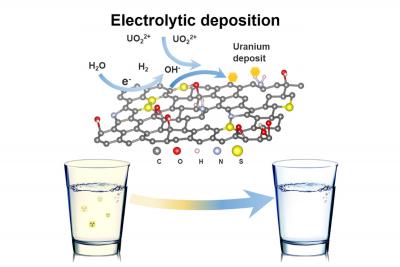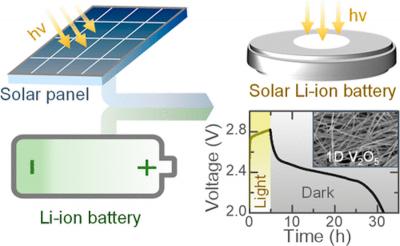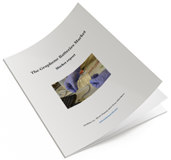Graphene Oxide: Introduction and Market News - Page 8
Graphene oxide foam helps filter toxins from drinking water
MIT-led research team uses graphene oxide foam in a device that can extract uranium and other heavy metals from tap water.

Some kinds of water pollution, such as algal blooms and plastics that foul various bodies of water, are found in plain sight. However, other contaminants are not quite as visible, which potentially makes them more dangerous. Among these invisible substances is uranium. Leaching into water resources from mining operations, nuclear waste sites, or from natural subterranean deposits, the element can reach taps worldwide.
First commercial contract for water filtration membranes enhanced with graphene oxide
UK's G2O Water Technologies has reported securing its first commercial contract for the enhancement of water filtration membranes with graphene oxide.
The Company explains that the advantages of using graphene oxide lie in the enhancement of membrane performance, as it mitigates the effects of fouling one of the biggest challenges operators of membrane-based water filtration systems face. With a coating of graphene oxide, successfully developed and piloted by the company in the northwest of England in collaboration with Hydrasyst Limited, operators can improve operational efficiency, reduce energy consumption and decrease chemical usage. It is anticipated that this will extend the lifetime of the membranes, as well as significantly reduce the cost and environmental impact of water treatment.
Tirupati Graphite starts operations at Graphene & Technology Centre in India
Tirupati Graphite has commissioned Stage 1 of the Tirupati graphene and mintech research center (TGMRC) in India. Tirupati says this marks the start of revenue generation at TGMRC and allows the company to advance commercialization engagements.
In Stage 1, the facility can initially produce up to 1 kilogram per day of graphene oxide ('GO'), reduced graphene oxide ('rGO') and aluminium graphene composite via the zero-chemical process developed by the company. Ongoing development and expansion of the facility will enable up to 10 kgs per day.
Directa Plus says new research supports the use of its graphene nano-materials in COVID face masks
Directa Plus recently stated that a research paper has been published in the journal iScience, supporting the use of its ‘functionalized’ graphene as an antimicrobial material in face masks.
The peer-reviewed paper said the company's G+ nanomaterials and those from graphene oxide provide a critical opportunity to significantly increase face mask efficacy.
Graphene-Info updates all its graphene market report
Today we published new versions of all our graphene market reports. Graphene-Info provides comprehensive niche graphene market reports, and our reports cover everything you need to know about these niche markets. The reports are now updated to July 2021.
The Graphene Batteries Market Report:
- The advantages using graphene batteries
- The different ways graphene can be used in batteries
- Various types of graphene materials
- What's on the market today
- Detailed specifications of some graphene-enhanced anode material
- Personal contact details into most graphene developers
The report package provides a good introduction to the graphene battery - present and future. It includes a list of all graphene companies involved with batteries and gives detailed specifications of some graphene-enhanced anode materials and contact details into most graphene developers. Read more here!
Graphene Flagship Partner SPAC updates on graphene-enhanced automotive components project
SPAC, an Italy-based medium-sized company specializing in the production of technical textiles, has joined the Graphene Flagship's Spearhead Project G+BOARD that aims to build parts of cars’ passenger compartments with graphene and related materials.
G+BOARD’s researchers aim to remove most of the copper wiring currently used in dashboards, to reduce the car’s weight and production steps, while improving aesthetics, disposal and recyclability. SPAC is developing new steering wheels and glove boxes with graphene-based materials.
Sunrise Energy Metals to take full ownership of graphene oxide membrane development joint venture company, NematiQ
In 2018, Sunrise Energy Metals (SRL) and Ionic Industries partnered up and established a JV called NematiQ to develop graphene oxide (GO) membranes for water treatment applications. SRL initially had a 75% stake in the joint venture, before increasing its interest to 83.2% in 2020. Now, SRL announced its plan to take full ownership of NematiQ.
NematiQ has developed a process for manufacturing GO, which can be applied to a membrane support to create a graphene oxide-based nanofiltration membrane (GO-Membrane). The GO-Membrane manufacturing process has reportedly already been demonstrated on commercial-scale industrial equipment.
Researchers demonstrate reversible fusion and fission of graphene oxide–based fibers
Researchers from Zhejiang University, Xi'an Jiaotong University and Monash University have developed a way to bind multiple strands of graphene oxide together, creating a process that could prove useful in manufacturing complex architectures.
 Reversible fusion and fission of GO fibers. Credit: Science
Reversible fusion and fission of GO fibers. Credit: Science
In recent years, materials scientists have been exploring the possibility of making products using total or partial self-assembly as a way to produce them faster or at less cost. In biological systems where two materials self-assemble into a third material, scientists describe this as a fusion process. Accordingly, when a single material spontaneously separates into two or more other materials, they refer to it as a fission process. In this new work, the researchers have developed a technique for creating graphene-oxide-based yarn that exploits both processes.
Graphene oxide gives a boost to new intranasal flu vaccine
Researchers at Georgia State University and Emory University have developed an intranasal influenza vaccine using recombinant hemagglutinin (HA), a protein found on the surface of influenza viruses, as the antigen component of the vaccine.
They also created a two-dimensional nanomaterial (polyethyleneimine-functionalized graphene oxide nanoparticles) and found that it displayed potent adjuvant (immunoenhancing) effects on influenza vaccines delivered intranasally.
Cambridge team designs GO-enhanced light rechargeable Lithium-Ion batteries
University of Cambridge researchers have designed a lithium-ion battery that can be directly charged in sunlight. This was done in an effort to improve the general process of connecting solar panels to batteries to store energy when the sun is shining.

The idea is to simplify how solar energy is harvested and stored, says Michael De Volder, a mechanical engineer at the University of Cambridge who led the work. If the team can improve the efficiency and lifetime of the hybrid device, its cost will likely be lower than combining solar cells and batteries. For the price of a battery, you get both functionalities, he says.
Pagination
- Previous page
- Page 8
- Next page


